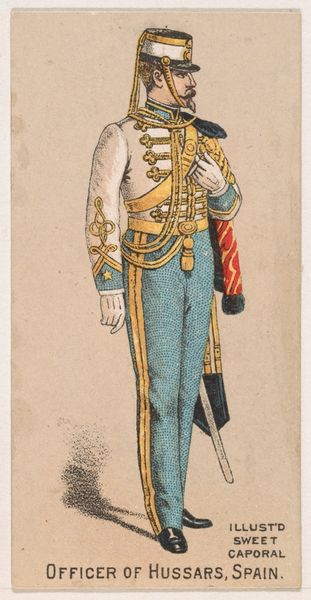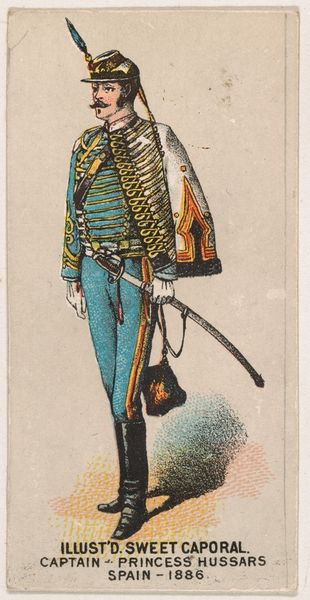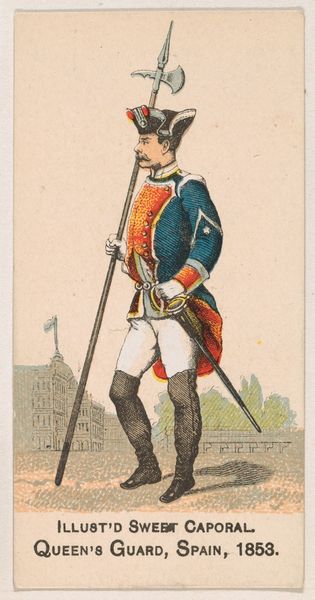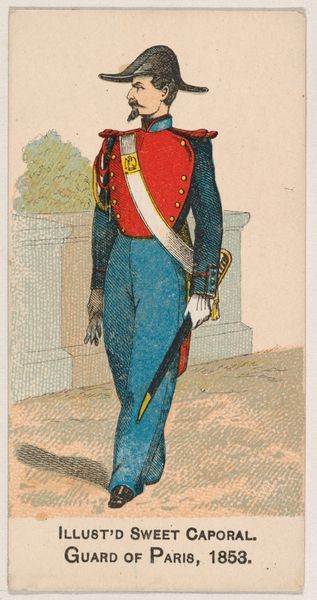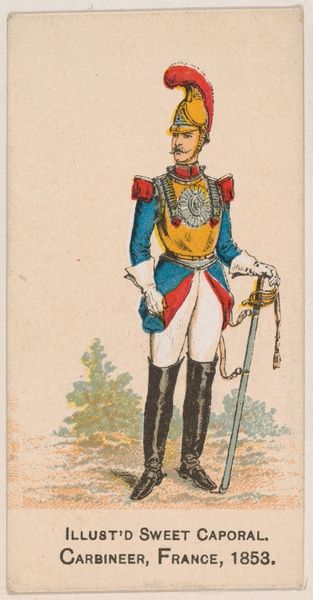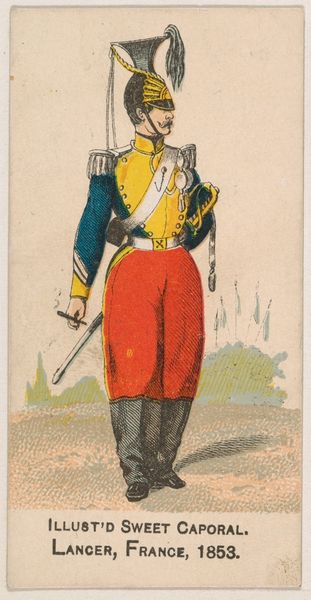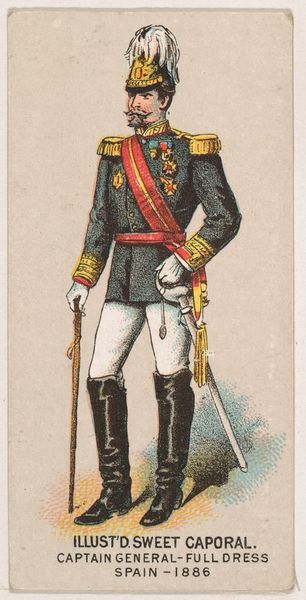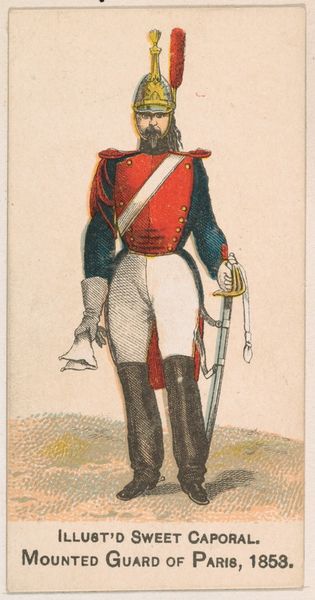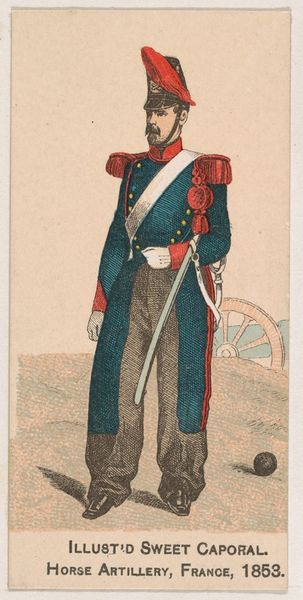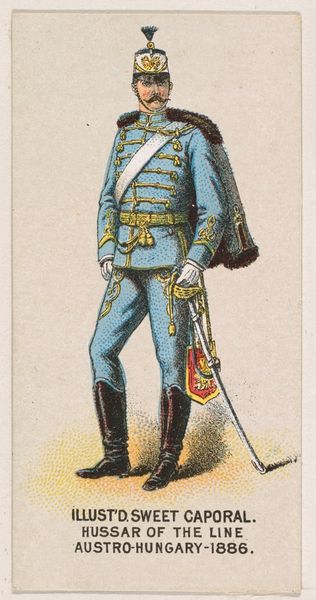
Marshal of France, 1853, from the Military Series (N224) issued by Kinney Tobacco Company to promote Sweet Caporal Cigarettes 1888
0:00
0:00
drawing, lithograph, print
#
portrait
#
drawing
#
lithograph
# print
#
figuration
#
watercolour illustration
#
history-painting
#
academic-art
#
watercolor
Dimensions: Sheet: 2 3/4 × 1 1/2 in. (7 × 3.8 cm)
Copyright: Public Domain
Editor: This lithograph, "Marshal of France, 1853," printed by the Kinney Brothers Tobacco Company around 1888, is fascinating. I'm struck by the detail in the uniform, particularly the gold embellishments. It feels almost theatrical. How should we interpret its historical and cultural significance, especially coming from a tobacco company? Curator: Precisely. Think about it - why use historical figures to sell cigarettes? This card is part of a larger phenomenon of using imagery, particularly idealized versions of history, to associate products with prestige, authority, and perhaps a sense of romanticism. This specific series, portraying military figures, tapped into existing popular fascination with historical power and military prowess, helping build brand loyalty by appealing to patriotic sentiments. What values did this promote in society at the time? Editor: So, it’s less about historical accuracy and more about using a recognizable image to create a positive association with their brand, kind of leveraging that figure's authority. Curator: Exactly. Academic art style also played a role by conveying respectability to brands and corporations through recognizable aesthetics and techniques, even in commercial contexts like cigarette cards. The "Marshal" is packaged, sold, and circulated. The image's distribution became interwoven with ideas about French history, even if a person didn’t directly purchase high art. It's an instance where corporate cultural production has an impact on societal conceptions of art. How does that idea impact how you understand its display within the museum? Editor: I see what you mean; now I realize the Met’s acquiring it highlights the blurred lines between advertising and cultural memory, raising questions about whose stories are deemed important and why. I hadn’t considered all the complex connections to brand identity! Curator: It also reveals that institutions, just like individuals, partake in the cultural narratives that brands attempt to write. Hopefully this made the image richer to examine today.
Comments
No comments
Be the first to comment and join the conversation on the ultimate creative platform.

